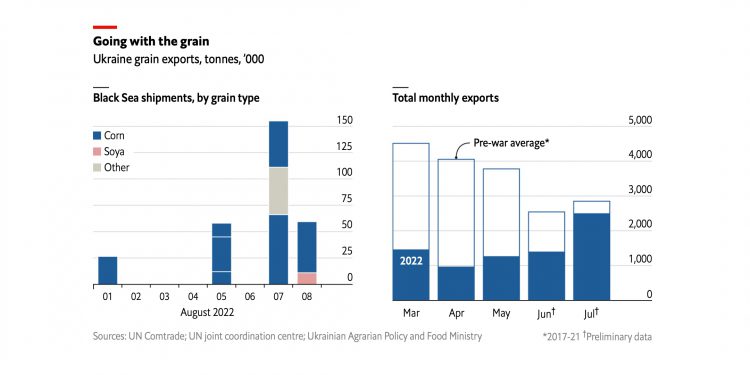The Economist reports that a cargo vessel fully loaded with Ukrainian grain set sail from Odessa on August 1st.
The 26,000 tonnes of corn on board is en route to Lebanon via the Black Sea. This was the first such shipment since the war started and a Russian blockade prevented Ukraine from shipping its crops.
In the week since its ports reopened under a UN-backed deal last month, nine more ships, carrying almost 300,000 tonnes of grain, have set off. By the autumn, Ukrainian officials expect to match the pre-war level of exports.
Before the war Ukraine exported around 4.2m tonnes of grain a month. Some of it left the country by road, by rail or on barges along the Danube. But most was exported by ship over the Black Sea.
In the three months after the start of the war (March to May) the volume of exports was at around one third of the normal level. Only around 1m tonnes of maize, 160,000 tonnes of wheat and 50,000 tonnes of soya left Ukraine each month.
In July, that increased to 2.5m tonnes of grain because of higher exports via the Danube, according to Ukraine’s ministry of agriculture. Officials say the additional routes through the Black Sea will allow food exports to return to pre-war levels, reaching 5m tonnes a month.
To reach that level the country would have to double the rate of exports seen in the past week. And exports would have to increase further still to clear the backlog of grain that has been stuck in Ukraine.
By The Economist’s own calculation, an estimated 10m tonnes of wheat, corn and other cereals that should have left the country are still sitting in storage. Ukraine’s ability to export its harvests should play a huge role in alleviating the grain shortage that is affecting some of the world’s poorest countries. It should also help bring prices down.























